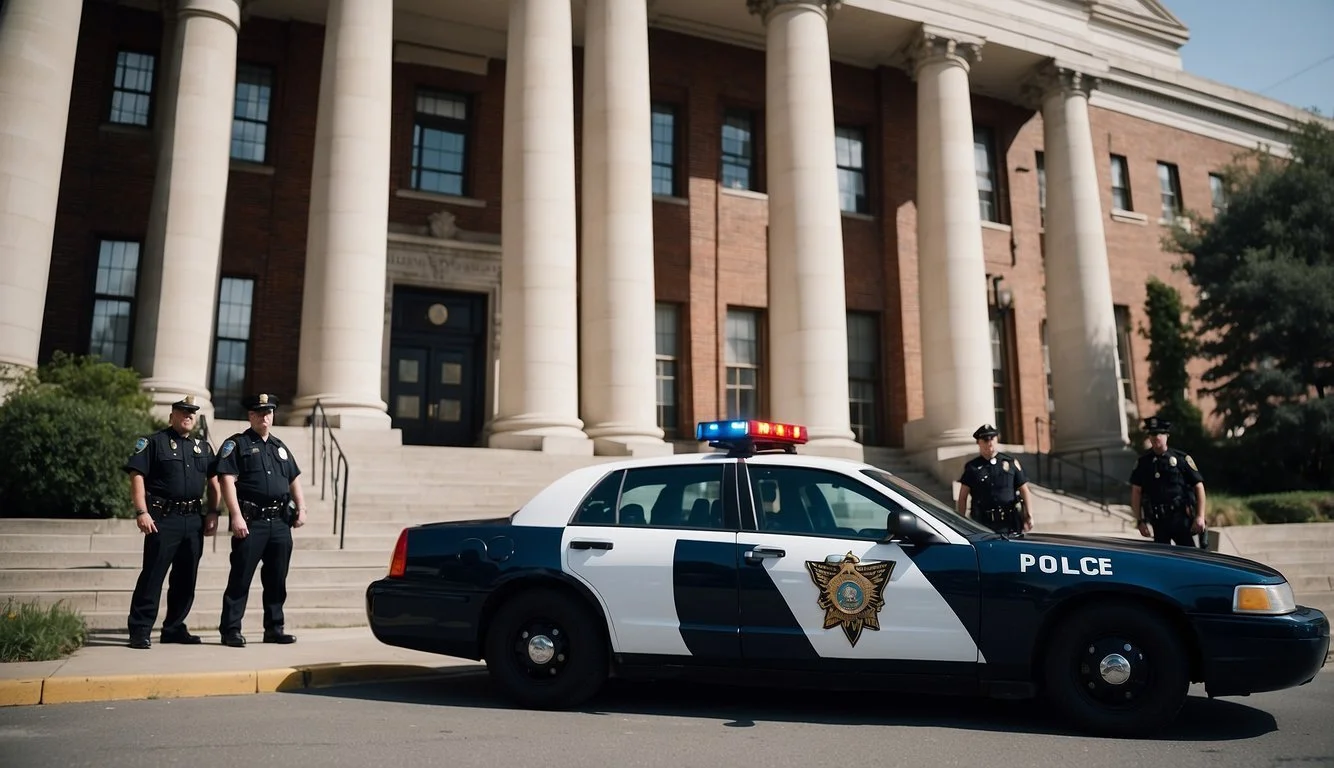Documentary Review: The Thin Blue Line (1988)
A Cinematic Masterpiece in True Crime
Errol Morris's 1988 documentary, "The Thin Blue Line," is a striking blend of investigation and storytelling. The film delves into the wrongful conviction of Randall Dale Adams, highlighting the flaws in the judicial system. Utilizing dramatic reenactments and a haunting score by Philip Glass, Morris crafts a gripping narrative that compels viewers to question the nature of justice.
The film's meticulous attention to detail and its compelling case presentation have earned it critical acclaim. With a 100% rating on Rotten Tomatoes and praise from critics like Roger Ebert, "The Thin Blue Line" stands out as a pivotal work in the documentary genre. Its impact has been profound, not merely for its cinematic achievements but also for its role in bringing about real-world change.
Philip Glass's original music score lends a chilling, rhythmic quality to the film, amplifying its emotional and investigative depth. By combining documentary realism with dramatic elements, Morris's work transcends traditional boundaries, offering a powerful meditation on truth and the legal system.
Background of 'The Thin Blue Line'
'The Thin Blue Line' is a landmark documentary directed by Errol Morris that focuses on the wrongful conviction of Randall Dale Adams. It combines investigative journalism with unique cinematic techniques to delve into the fallibility of the justice system.
Director Errol Morris' Vision
Errol Morris envisioned 'The Thin Blue Line' as more than just a documentary; he sought to innovate the genre. He utilized reenactments, interviews, and a haunting score by Philip Glass to create a compelling narrative. Morris is known for his meticulous attention to detail and his ability to unearth intricate truths, making this documentary a blend of investigation and cinematic art.
Historical Context
The film is set against the backdrop of 1970s Texas, a period marked by a strong inclination towards capital punishment. The narrative revolves around the 1976 murder of police officer Robert W. Wood and the subsequent wrongful conviction of Randall Dale Adams. This context underscores the broader issues of justice and systemic flaws in the legal system, providing a critical lens through which to view the case.
Production Details
'The Thin Blue Line' was produced with a pioneering approach to storytelling. Morris conducted in-depth interviews and employed dramatized reenactments, a technique that was not commonly used in documentaries at the time. The film was scored by Philip Glass, whose minimalist music adds a layer of tension and urgency. The production's innovative methods set a new standard for documentary filmmaking.
Synopsis of the Documentary
The Thin Blue Line, a 1988 documentary directed by Errol Morris, dissects the case of Randall Dale Adams. Adams was convicted of murdering Dallas police officer Robert W. Wood in 1976 and sentenced to death.
The documentary uses a mix of interviews, reenactments, and archival footage.
These elements collectively argue that Adams was wrongly convicted, highlighting flaws in the justice system.
Particularly notable are the interviews with key figures involved in the case. These interviews reveal discrepancies and biases that contributed to Adams' conviction.
Director Errol Morris meticulously presents evidence, scrutinizes testimonies, and rebuilds the timeline of events.
The documentary not only questions Adams' guilt but also exposes systemic issues in the legal process. The film helped bring significant attention to Adams' case and ultimately led to his release. Throughout, Philip Glass' musical score serves to underscore the film's intense and reflective mood.
Themes and Analysis
Errol Morris's The Thin Blue Line explores ideas surrounding the complexities of truth, harsh realities within the justice system, and the intricate artistry used to tell Randall Adams' story.
Interrogation of Truth and Subjectivity
The film questions the concept of objective truth through its use of differing perspectives and reenactments. By presenting various interviews and conflicting testimonies, Morris highlights how personal biases and subjective experiences shape the narrative. The deliberate use of disjointed and contradictory accounts forces viewers to question the reliability of each character, emphasizing the elusive nature of absolute truth in complex legal cases.
Justice System Critique
Morris's documentary serves as an indictment of the flawed judicial system. Through detailed examinations of police misconduct, prosecutorial overreach, and systemic biases, the film criticizes how justice is often subverted. The wrongful conviction of Randall Adams underscores the dire consequences of these institutional failures. This stark portrayal invites audiences to reflect on broader issues within the American legal system, emphasizing the need for reform to prevent further miscarriages of justice.
Artistic and Stylistic Choices
The Thin Blue Line is notable for its innovative use of cinematic techniques. Philip Glass's haunting score and the film's rhythmic editing create a suspenseful atmosphere that blurs the lines between documentary and drama. Morris's pioneering use of dramatic reenactments and point-counterpoint interviews adds depth to the narrative, making the case feel immediate and impactful. These artistic choices not only enhance the storytelling but also underscore the emotional gravity of the subject matter.
Critical Reception
"The Thin Blue Line" (1988) was met with notable praise for its innovative narrative style and significant impact on documentary filmmaking. Its critical reception highlights both the immediate responses and its long-term influence on the genre.
Contemporary Reviews
Upon its release, "The Thin Blue Line" received widespread acclaim. Critics praised Errol Morris’s unique blend of documentary and dramatic reenactments, which was seen as groundbreaking at the time.
Roger Ebert highlighted the film’s meticulous use of visual and musical elements, describing it as "a meditation" on the injustice faced by Randall Adams. Publications such as The Criterion Collection acknowledged the film as a revolutionary work, reflecting its influence and its standing in film history. Reviews emphasized the film’s compelling storytelling and its success in bringing significant attention to Adams's case.
Impact on Genre and Filmmaking
"The Thin Blue Line" is often cited as a transformative piece in documentary filmmaking. It merged narrative techniques with investigative journalism, setting a precedent for future documentaries.
The use of reenactments and Philip Glass's atmospheric score created an engaging, almost cinematic experience, which has influenced many documentary filmmakers since. The British Film Institute ranked it among the top documentaries, and its inclusion in the National Film Registry underscores its cultural, historical, and aesthetic significance. This film's innovative approach reshaped the expectations and potential of documentary storytelling.
Real-Life Impact
The release of "The Thin Blue Line" had significant repercussions, influencing the reopening of Randall Adams' case and altering public perception of the criminal justice system.
Reopening the Case
"The Thin Blue Line" played a pivotal role in prompting a re-examination of Randall Adams' conviction.
Director Errol Morris' meticulous investigation brought new evidence to light. Interviews and reenactments revealed inconsistencies in witness accounts and uncovered new testimonies. These findings called into question the validity of Adams' conviction for the murder of a police officer.
As a result, legal authorities re-evaluated the case. In 1989, just a year after the film's release, Adams was released from prison after spending over a decade on death row. This case remains a landmark example of how documentary filmmaking can instigate legal and judicial changes.
Public Perception Shifts
The film also had a profound effect on how the public viewed the justice system.
"The Thin Blue Line" challenged audiences to rethink the reliability of legal processes and the potential for wrongful convictions. By using dramatic reenactments and analytical storytelling, the documentary brought attention to flaws in the system.
The use of factual evidence presented in an engaging format helped to generate widespread discussion. This shift in perception encouraged more critical scrutiny of law enforcement practices and contributed to the rise in popularity of investigative documentary films.
Future filmmakers and advocates have since cited "The Thin Blue Line" as an influential work that continues to inspire efforts towards criminal justice reform.
Conclusion
The Thin Blue Line (1988) stands out as a groundbreaking documentary due to its innovative storytelling techniques.
Director Errol Morris combines detailed investigative work with stylistic visuals to explore the wrongful conviction of Randall Dale Adams.
Through the use of reenactments, interviews, and a powerful score by Philip Glass, the film creates a compelling narrative.
The documentary's impact goes beyond just storytelling. It played a role in highlighting flaws in the criminal justice system, which eventually led to Adams' release.
The minimalist approach to visuals and music enhances the stark reality of the case. By focusing on key elements like witness testimonies and evidence, the film emphasizes the gravity of the judicial errors involved.
The Thin Blue Line challenges the audience to question the infallibility of the legal system.
By maintaining a neutral yet probing lens, the documentary offers a detailed examination without sensationalism. This approach underscores the importance of unbiased inquiry in uncovering the truth.
Viewers are left with a deeper appreciation for the intricacies of justice and the importance of thorough investigation. The film remains relevant, resonating with contemporary issues of wrongful convictions and judicial reforms.




